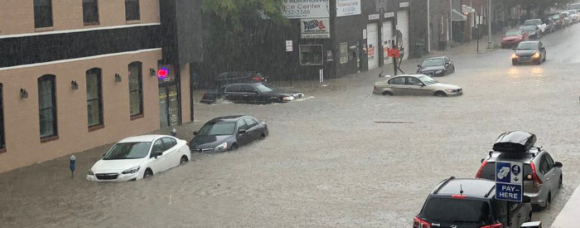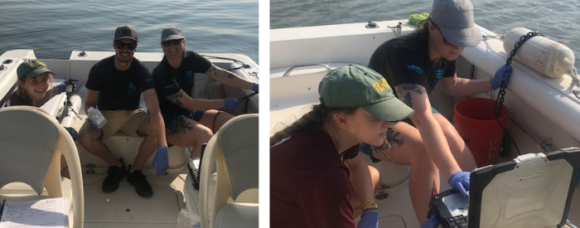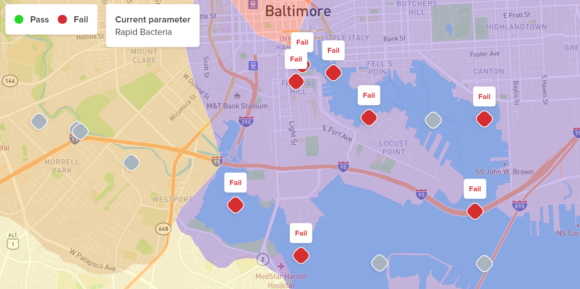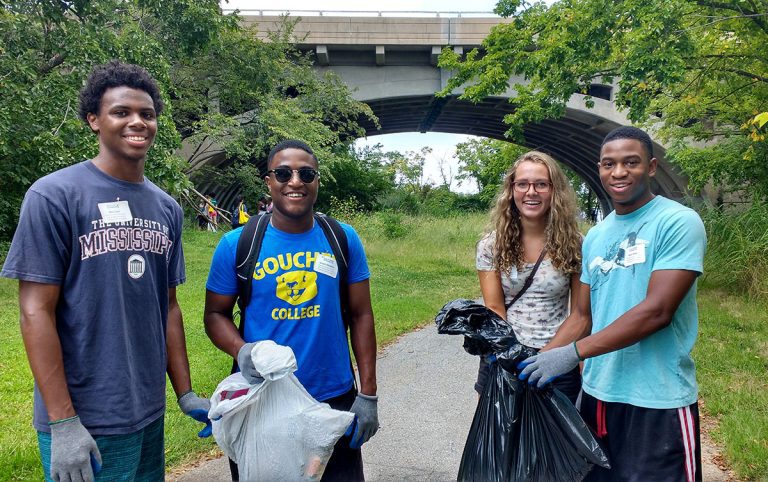Flash Floods Hit Baltimore (And Our Waterways) Hard
Last week, a powerful storm flooded Baltimore’s most popular neighborhoods. Our waterways took a hit, too.
On August 6, 2019, the storm dropped almost a half foot of rain in a two-hour span. Flash floods overtook many neighborhoods at the foot of the Jones Falls watershed. Some people posted dramatic photos of stranded cars and flooded buildings (as seen above).
Why did Baltimore flash floods get so bad so quickly?

According to our Lead Water Quality Scientist, Alice Volpitta, it’s a one-two punch:
First, 45 percent of Baltimore surfaces consist of streets, sidewalks, and roofs that don’t soak up rain. With no place to go, the water bulldozed it’s way into Baltimore’s low-lying neighborhoods.
Second, “[the city’s infrastructure] just isn’t built to handle that amount of water,” said Volpitta. Rainfall bombarded drains already clogged with trash (like plastic bags) in many parts of the city. The sheer volume of storm water was too much for Baltimore’s drains.
What impact did these floods have?

When the storm subsided, flash flood water flowed into Baltimore’s sewage system. The flooding caused two sewage overflows along the Jones Falls Trail. These overflows sent wastewater down to the Jones Falls outfall and straight into the Inner Harbor.
Our water quality monitoring team sprung into action the morning after the storm. Our team took water samples and ran water quality tests, including a rapid bacteria test. This test serves as a great indicator of sewage spills and whether water is unsafe for human health.
After relentless flash floods, the results came as no surprise. All eight of our sampling sites failed to meet water quality standards safe for human contact.
Now what?
This won’t be the last time that Baltimore struggles with flooding. This also won’t be the last time that sewage harms our waterways. Getting sewage pollution in our waterways under control is a complicated challenge.
There are things you can do to help Blue Water Baltimore solve this challenge:
- Visit our Baltimore Water Watch website to view local water quality conditions. Now through November, our Waterkeeper and water quality team will be posting results weekly.
- Report pollution through our website.
- Connect with us to stay up-to-date on volunteer opportunities.
- Take part in advocacy to influence policies for clean water.
This article is adapted from a story originally published by Chesapeake Bay Magazine and written by Meg Walburn Viviano. Main photo credit: Alex Krupey/Twitter.



